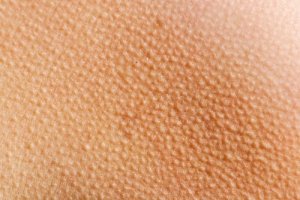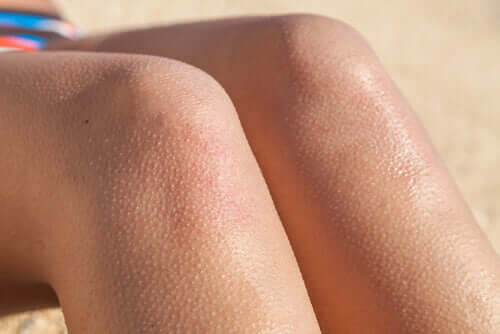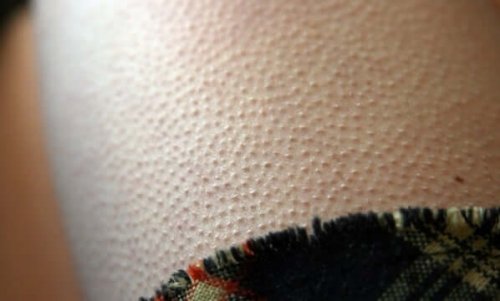Piloerection - It'll Give You Goosebumps

Piloerection is the technical name for what most of us know as “goosebumps. It’s that ruffle of the hair follicles when we get cold, excited, shocked or scared. There’s also a neo-Latin medical term for it: Cutis Anserina.
Scientists say that piloerection is an evolutionary vestige that reminds us of the texture of a bird’s skin after plucking. Humans inherited this characteristic from our ancestors who also got goosebumps whenever they experienced extreme sensations.
For instance, cats have a similar reaction. Their hair stands on end whenever they sense danger and prepare to fight or fly. They also puff up and become more aggressive, which is somewhat similar to how other animals react.
What exactly is piloerection?

Piloerection is an involuntary physiological phenomenon, triggered by the action of the sympathetic nervous system. The hair erector muscles contract and so the hair stands up and thus the skin gets the characteristic unplucked bird appearance.
What happens here is there’s a contraction of the small muscles at the base of each hair. It opens them so that the hair separates and stands up and gives the skin a grainy appearance. This usually happens on the forearms, legs, neck, head, and neck.
This happens under all sorts of stimuli such as:
- Shock
- Fear
- Emotion
- Excitement
Most of the time, but not always, there’s a slight drop in body temperature when we get goosebumps.
Find out more: How to Prevent Ingrown Hair
Anatomical and biological aspects
As we mentioned above, piloerection is a sympathetic nervous system response. This is also known as the adrenergic or noradrenergic system. And this name is due to the fact that noradrenaline is the main neurotransmitter here.
The sympathetic system activates during “E-situations” such as escape, stress, exercise, and emergency. The adrenal glands release adrenaline, which goes into the bloodstream in this type of situation. Thus, piloerection takes place. It also increases muscular activity and makes us shiver so that we can warm up when this is produced by cold temperatures.
If the goosebumps are the result of fear, then the piloerector reflex comes along with an increase in heart rhythm. This leads to more blood pumping into the large muscles and dilates the pupils to sharpen our eyesight. Something similar happens in the case of other shocks and strong emotions.
The function of piloerection

When goosebumps appear as a response to fear, their role is to expand the volume of the body. In other words, we seem bigger with the hair standing up and thus more intimidating. As you can see, this is a biological defense mechanism, which activates when we feel threatened.
Porcupines are the best examples to illustrate the functions of piloerection. This animal raises its spikes when they sense danger. The same happens with many other mammals such as chimpanzees, mice, cats, etc.
Read on: 7 Surprising Benefits of Taking Cold Showers in the AM
Other information of interest
In conclusion, piloerection in human beings is basically useless. We don’t have enough hair on our bodies for it to really act as an insulating layer. Likewise, our hair is not long enough to make us look bigger than we are when we get goosebumps.
This is why scientists think this phenomenon is merely a vestige of our evolutionary process. That is, we inherited this defense mechanism from our ancestors but can’t use it as other mammals do.
For one, a human’s brain is a lot more complex than those of other species, and the piloerector reflex is also mediated by psychological factors. Our limbic system makes our hair stand up when we hear a song we like or the voice of someone we have the hots for.
All cited sources were thoroughly reviewed by our team to ensure their quality, reliability, currency, and validity. The bibliography of this article was considered reliable and of academic or scientific accuracy.
- Vidal, I. (2009). Piloerección: Un Efecto Colateral de la Administración Intravenosa de Dobutamina. Arq Bras Cardiol, 92(4), 283-285.
This text is provided for informational purposes only and does not replace consultation with a professional. If in doubt, consult your specialist.








